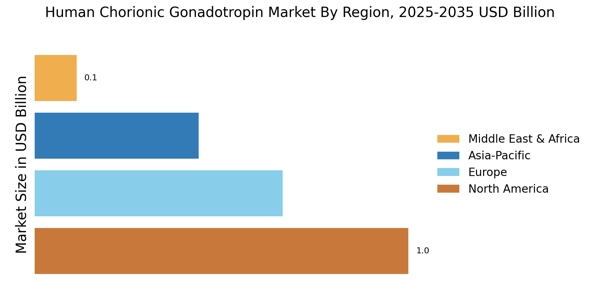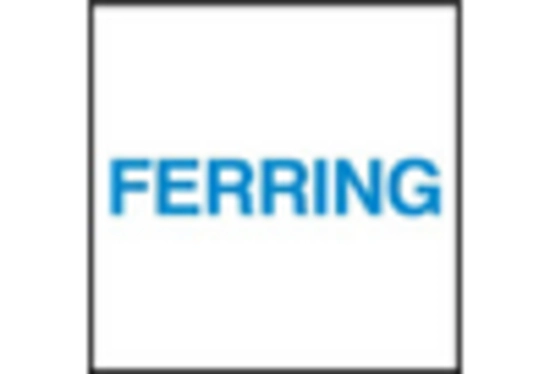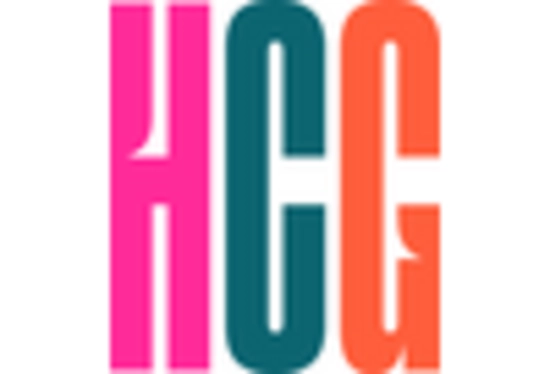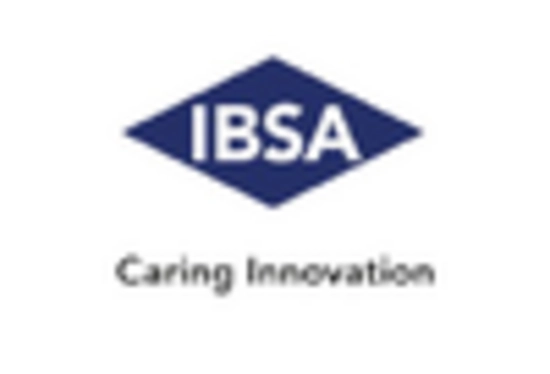Rising Incidence of Hormonal Disorders
The rising incidence of hormonal disorders is a critical driver for the Human Chorionic Gonadotropin Market. Conditions such as hypogonadism and other endocrine disorders often require hormonal therapies, including the use of HCG. The increasing prevalence of these disorders is attributed to various factors, including lifestyle changes and environmental influences. As awareness of hormonal imbalances grows, more patients are seeking medical intervention, leading to a higher demand for HCG products. According to recent estimates, the market for hormonal therapies is projected to expand, with HCG playing a pivotal role in treatment protocols. This trend underscores the importance of HCG in addressing hormonal disorders, thereby contributing to the overall growth of the market.
Increasing Awareness of Fertility Issues
The rising awareness of fertility issues among couples is a notable driver for the Human Chorionic Gonadotropin Market. As more individuals recognize the challenges associated with infertility, there is a growing demand for effective treatments. This awareness is often fueled by educational campaigns and social media, which highlight the importance of reproductive health. Consequently, healthcare providers are increasingly prescribing Human Chorionic Gonadotropin Market as part of fertility treatment protocols. In recent years, the market has seen a surge in the number of clinics offering assisted reproductive technologies, which further propels the demand for HCG. The increasing prevalence of conditions such as polycystic ovary syndrome (PCOS) also contributes to this trend, as it often necessitates the use of HCG in treatment regimens.
Growing Investment in Research and Development
Growing investment in research and development (R&D) is a pivotal driver for the Human Chorionic Gonadotropin Market. Pharmaceutical companies are increasingly allocating resources to explore new applications and formulations of HCG, aiming to enhance its therapeutic potential. This investment is often directed towards clinical trials and studies that investigate the efficacy of HCG in various medical conditions beyond fertility, such as obesity and certain cancers. The results of these studies could potentially broaden the market for HCG, attracting new segments of patients. Furthermore, collaborations between academic institutions and industry players are fostering innovation in HCG-related therapies. As R&D continues to advance, it is likely to yield new insights and applications, thereby driving growth in the HCG market.
Expansion of Assisted Reproductive Technologies
The expansion of assisted reproductive technologies (ART) is a significant driver for the Human Chorionic Gonadotropin Market. As ART becomes more widely accepted and utilized, the demand for HCG as a key component in these procedures is expected to rise. Techniques such as in vitro fertilization (IVF) and intracytoplasmic sperm injection (ICSI) often incorporate HCG to trigger ovulation and support embryo development. The increasing success rates of ART, coupled with advancements in technology, have led to a surge in the number of couples opting for these treatments. Market data indicates that the ART sector is experiencing robust growth, which directly correlates with the rising utilization of HCG in fertility treatments. This trend is likely to continue, further solidifying HCG's role in reproductive health.
Technological Advancements in Drug Delivery Systems
Technological advancements in drug delivery systems are significantly influencing the Human Chorionic Gonadotropin Market. Innovations such as sustained-release formulations and advanced injection devices enhance the efficacy and convenience of HCG administration. These developments not only improve patient compliance but also optimize therapeutic outcomes. For instance, the introduction of pre-filled syringes and auto-injectors has simplified the administration process, making it more accessible for patients. Furthermore, research into novel delivery methods, such as transdermal patches, is underway, which could potentially expand the market. The integration of technology in drug delivery is expected to drive growth in the HCG market, as healthcare providers and patients alike seek more efficient and user-friendly options.


















Leave a Comment